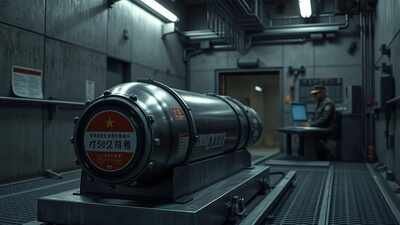Hong Kong
CNN
—
As the metal gangway is lowered, the crew gets to work securing the ship to the dockside – their bright orange jumpsuits dwarfed by the vast pink container ship behind them.
Once the ONE Modern vessel is safely attached, three crane drivers begin a race against the clock to unload and reload more than 700 containers from the Port of Hong Kong, in less than 10 hours.
For the myriad companies across the globe in the same boat, there’s a bigger race at stake: the massive operation to get goods out of China and into the US before the pause on higher tariffs imposed by US President Donald Trump expires on August 12.
“The indices for unpredictability and chaos are actually at an all-time high,” Roberto Giannetta, chairman of the Hong Kong Liner Shipping Association, told CNN. “This instability is creating a lot of chaos.”

Negotiations between the US and China took place in London last week, which resulted in an agreed framework on a trade truce, according to officials on both sides.
But those on the frontlines of dealing with these shifting trade policies are not taking any chances. China is America’s second-largest trading partner behind Mexico. Trade between the two countries exceeded $688 billion last year, according to Chinese data.
“The rules change three times a week,” said Rick Woldenberg, CEO of Learning Resources, an educational toy company based in Chicago. “We have absolutely no idea what the rules will be when the product arrives.”
When the US announced sweeping tariffs on most of the world on April 2, it unleashed chaos on complex global supply chains which enable the free-flow of goods around the world – especially the shipping industry, which transports 90% of all manufactured goods.
Despite a separate 90-day pause on most of the tariffs, business leaders say they have to operate as if the tariffs are going to return.
US firms have been trying to stockpile goods during the truce period, sending Chinese factories into overdrive to meet demand and pushing shipping companies to deliver as much as possible in the current window.
“Companies want to front load, because they simply don’t know what just a few weeks down the road, what reality is going to look like,” said Jens Eskelund, the Beijing-based president of the EU Chamber of Commerce in China. “It makes it very hard to plan, it creates inefficiency, and eventually that also will add to costs.”

Inside the race to get goods out of China
Inside the race to get goods out of China
03:14
On board the 302 meter-long (990 feet) ONE Modern, owned by Japan’s Ocean Network Express, there are up to 7,000 containers filled with products such as clothing, furniture, and car parts – mostly made in China – destined for the US.
Despite America’s trade whiplash, the ship’s crew seem remarkably stoic, a sign of the resilience that has become the hallmark of the shipping industry. In recent years, the sector has weathered constant crises including the Covid-19 pandemic, the blockage of the Suez Canal and the threat of Houthi missiles in the Red Sea.
“Shipping always continues, no matter what you throw at it,” Giannetta said. “This is an industry that doesn’t stop.”
After leaving Hong Kong, the ship will travel more than 10,000 nautical miles – stopping at three ports in mainland China and one in South Korea, before crossing the Pacific Ocean, passing through the narrow channels of the Panama Canal and finally reaching Houston, Texas.
On the US side, some companies that rely on Chinese imports are struggling to stay afloat.
“You will see a die-off of some of these businesses,” Woldenberg said. “There’s tremendous destruction of wealth, and I don’t think that’s recoverable.”
The toy industry has been hit particularly hard, because nearly 80% of all toys sold in the US are made in China, according to the US Toy Association.
Woldenberg has successfully sued the Trump administration over the trade war, although a US district court’s decision to grant an injunction on the tariffs is currently stayed after an appeal from the government.
“Of course we had to fight,” he said. “I can’t accept the knockout punch.”
Learning Resources, a fourth-generation family business dating back 100 years, employs 500 people in the US. They are now actively moving some toy production out of China to avoid the “soap opera ups and downs between the US.”
But moving manufacturing to the US, one of the stated goals of the trade war, is only “a bureaucrat’s fantasy,” Woldenberg said, because the capacity is not currently available on home soil.

Trump has previously shrugged off the impact of tariffs on US businesses and consumers, telling a cabinet meeting on April 30 that the container ships coming to the US are “loaded up with stuff, much of which we don’t need.”
“Maybe the children will have two dolls instead of 30,” Trump added. “Maybe the two dolls will cost a couple of bucks more than they would normally.”
“Retailers will run out of product,” Woldenberg said. “That is absolutely, certainly going to happen.”
As well as shortages on the shelves, industry leaders are also clear that any financial pain will be passed on to the American public.
“All of these charges actually get pushed down to the consumer,” Giannetta said.
Woldenberg agreed: “They can call it tariffs or whatever they want, but it’s a tax and they’ve turned our company into a tax collector.”






